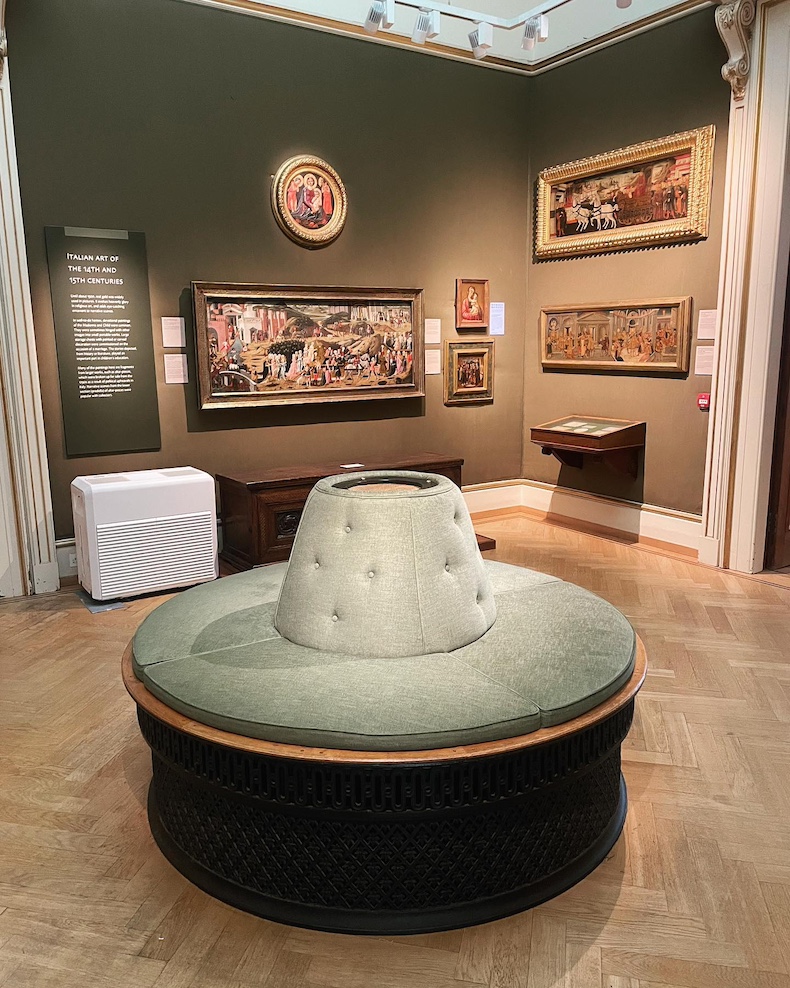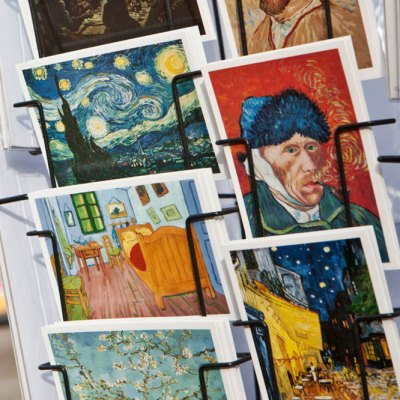Most of the larger rooms in the revamped National Gallery – the ones that contain Velázquez or Veronese or Gentileschi or Stubbs – now have big blond wooden benches that look, if no one’s sitting on them, like Donald Judd sculptures. Gone are those leather couches that gave the place the air of a Victorian gentlemen’s club. So too those dark wooden benches that visiting schoolchildren liked to skid along. (One of these was recently for sale online for those wishing to ‘add character and history to a room’.) The new seats aren’t as simpatico with the stately-home aesthetic of the main building and, for some, that will be reason to complain. But they work. Wide enough to accommodate sitters on every side, they’re the right height to look at a painting – and not just the ones whoever installed the seats has decided you should be looking at, either. Among the Venetian paintings in Room 9, you can glide, gondola-style, from Tintoretto to Veronese to Bordone and back. In Room 33, if you time it right, you can execute a 360-degree slide around the bagel-shaped bench, via Canaletto, Guardi, and Tiepolo’s Allegory with Venus and Time (c. 1754–58), with its staggered banks of raked seating made of peach-coloured cloud.
A many-cushioned sofa at ArkDes in Stockholm. Photo: Ben Street

Museum seats – like museum cafes, cloakrooms, shops and toilets – may seem of less consequence than the artworks surrounding them, but they too can make all the difference between a one-time visit and the first of many. Seating says something: it announces that there are many ways of doing this. A room without seats is saying the opposite. At their best, museum seats invite slowness. Their perfect literary tribute, Thomas Bernhard’s novel Old Masters (1985), features a man who sits at the same bench in the Kunsthistorisches Museum, Vienna, for several hours every other day, staring (or not staring) at a painting he only somewhat likes: Tintoretto’s Portrait of a Man with a White Beard (c. 1570). Most of the book is not about the painting. And most museum visits are not only about the art. They’re also about getting out of the rain, finding a good Wi-Fi network, impressing your date, sleeping off a big lunch, sending a devastating tweet about teens in museums staring at their phones rather than the art – the philistines! – and museum seats are an acknowledgement of that diversity of use. (The grey, plush, high-backed seats in the Kunsthistorisches Museum, by the way, are among the best around, and the Wi-Fi is decent too).
Plush round seating at the Ashmolean Museum, Oxford. Photo: Ben Street

Where are the greatest museum seats in the world? Thanks for asking. The soft modernist squares in the Pinacoteca Nazionale di Bologna are hard to beat, as are the Ashmolean’s cosy circular sofas and benches. Ca’ Pesaro International Gallery of Modern Art in Venice has jigsaw-like blocks of movable soft seats that resemble Frederick Kiesler’s rocking stools for Peggy Guggenheim’s Art of This Century gallery in New York – the holy grail for the museum seat aficionado. Crystal Bridges Museum of American Art in Arkansas has an exceptional array of comfortable seating options. So does the Gemäldegalerie in Berlin, and you’re usually guaranteed to have them to yourself. Paris museums are full of them, from the outrageously plush stools at the Musée Jacquemart-André to the Musée de la Chasse’s olive green sofas – not forgetting the rippled glass bench at the Musée d’Orsay that is, for some of us, so inextricable from the experience of looking at Manet’s Le Déjeuner sur l’Herbe (1863) that it may as well have been designed by the man himself. Less good are the minimalist picnic benches in certain modern and contemporary galleries, such as The Shed in New York or the Stedelijk in Amsterdam, that throw inadvertent shade on the artworks they accompany, as if to suggest that they aren’t worth sitting in front of.
At the Musée d’Orsay, a Water Block bench designed by Tokujin Yoshioka sits in front of Manet’s Le Déjeuner sur l’herbe (1863). © Tokujin Yoshioka

The work of the artist Finnegan Shannon often addresses the issues of accessibility that are embodied by museum seating. Their work includes bright blue benches, seats and cushions installed in museum and gallery spaces. Each is covered in text that encourages visitors to vote with their feet – or, better still, backsides – when it comes to how museums accommodate diverse physical needs. This series of works, titled Do you want us here or not (2018–), uses slogans that emphasise what’s really at stake in this under-discussed aspect of museum design. ‘MUSEUM VISITS ARE HARD ON MY BODY. REST HERE IF YOU AGREE,’ reads one. ‘I’D RATHER BE SITTING. REST HERE IF YOU AGREE,’ reads another. Museum seats matter because what matters most in a museum is people. And the best kind of museum seat can’t be seen anyway – because you’re sitting on it.
An unforgiving wooden bench at the Rubell Museum, Miami. Photo: Ben Street

Ben Street is an art historian and creator of @museumseats. He is the author of How to Enjoy Art: A Guide for Everyone and the award-winning children’s book How to Be an Art Rebel.



